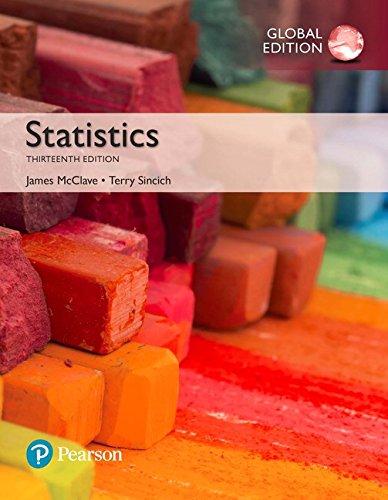Lobster trap placement. Refer to the Bulletin of Marine Science (Apr. 2010) study of lobster trap placement,
Question:
Lobster trap placement. Refer to the Bulletin of Marine Science (Apr. 2010) study of lobster trap placement, LO5 Exercise 7.41 (p. 363). Recall that the variable of interest was the average distance separating traps—called trap spacing—deployed by teams of fishermen fishing for the red spiny lobster in Baja California Sur, Mexico. The trap spacing measurements (in meters) for a sample of 7 teams from the Bahia Tortugas (BT) fishing cooperative are repeated in the table. In addition, trap spacing measurements for 8 teams from the Punta Abreojos (PA) fishing cooperative are listed. For this problem, we are interested in comparing the mean trap spacing measurements of the two fishing cooperatives.
BT cooperative: 93 99 105 94 82 70 86 PA cooperative: 118 94 106 72 90 66 153 98 Based on Shester, G. G. “Explaining catch variation among Baja California lobster fishers through spatial analysis of trap-placement decisions.” Bulletin of Marine Science, Vol. 86, No. 2, Apr. 2010 (Table 1), pp. 479–498.
a. Identify the target parameter for this study.
b. Compute a point estimate of the target parameter.
c. What is the problem with using the normal (z)
statistic to find a confidence interval for the target parameter?
d. Find a 90% confidence interval for the target parameter.
e. Use the interval, part
d, to make a statement about the difference in mean trap spacing measurements of the two fishing cooperatives.
f. What conditions must be satisfied for the inference, part e, to be valid?
Step by Step Answer:






